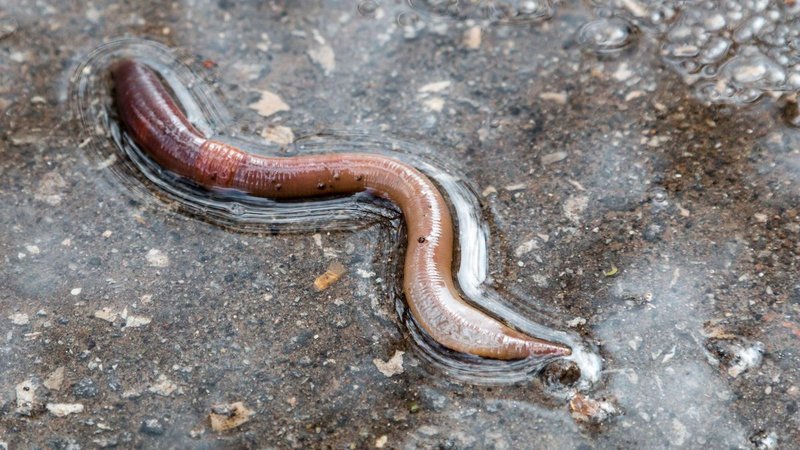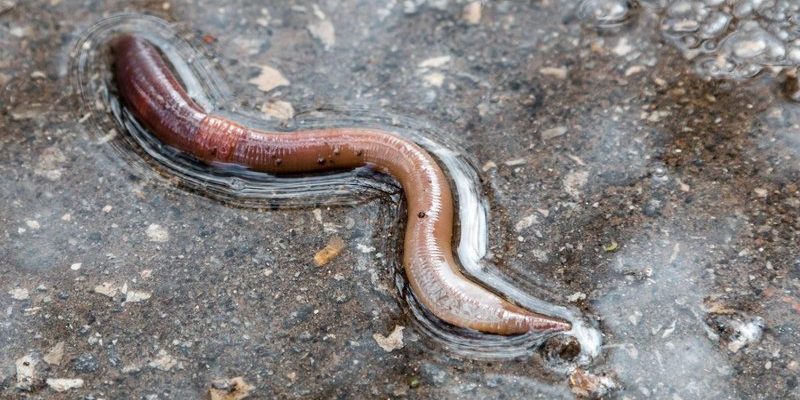
Let’s imagine for a moment that you’re an earthworm, snug in your cozy underground burrow. Suddenly, the ground around you is flooded with water. What would you do? For an earthworm, the answer seems pretty clear—**come to the surface!** But it’s not just a whim; there’s a lot more going on that leads them to make this decision. So grab a cup of coffee, and let’s dive into the world of earthworms and their rainy day antics.
Understanding Earthworm Behavior
Earthworms are curious little critters. They live in soil, nourishing it and helping plants thrive. But when heavy rain arrives, these worms find themselves in a tricky situation. Their burrows can fill with water, which makes it hard for them to breathe. Earthworms breathe through their skin, and when their home gets too soggy, they can drown.
When it rains heavily, the water pushes down into their burrows. It can become a bit like a swimming pool for these little guys. You might be wondering, “Why not just stay put?” Well, here’s the thing—earthworms are naturally resilient creatures. They’ve evolved to seek out a new place to live when their environment becomes unsafe. Surfacing during rain is their instinctive response to danger.
Another reason earthworms surface is to find mates. When conditions are right, they might use the moisture in the air and soil as a signal that it’s a perfect time for reproduction. Picture it like a dating event—when it rains, they come out to meet others and increase their chances of finding a partner.
The Role of Moisture
Moisture plays a crucial role in the behavior of earthworms. These creatures thrive in moist environments, which help them move around and survive. When it rains, the moisture level in the soil rises significantly, prompting earthworms to make their way to the surface.
This wet environment helps them expand their habitat without the risk of drying out. Think about it: when you’re thirsty, you might seek out a drink. For earthworms, moist conditions are like an invitation to venture out and explore.
In addition, the humidity in the air during a rainy day helps keep their skin damp. As I mentioned earlier, earthworms breathe through their skin. So when they’re out and about during a downpour, they’re less likely to become dehydrated, making it a safer time for them to roam.
Survival Tactics
The act of surfacing isn’t just about finding a mate or enjoying the rain; it’s a matter of survival. Earthworms need to avoid suffocation in their flooded burrows. If they stay underground during heavy rain, they risk drowning. By surfacing, they increase their chances of finding a new home or continuing their life cycle.
But this behavior also has its drawbacks. Surviving predators—like birds and other animals—often take advantage of earthworms on the surface. It’s a bit of a gamble, like playing a game of chance. They might find safety, but they also become easy targets.
So, why do they take that risk? Well, sometimes, it’s a matter of necessity. If the conditions underground become too life-threatening, the chance of getting eaten is often worth taking the risk to stay alive.
Environmental Impact
Earthworms are often seen as unsung heroes in the ecosystem. Their surfacing behavior during heavy rain can have a positive impact on the environment. By coming to the surface, they help aerate the soil, allowing oxygen to reach plant roots better. This is similar to how a gardener might turn over soil to keep it fresh and healthy.
Additionally, as they move around, earthworms break down organic matter. This process enriches the soil, promoting plant growth. So, when they come out during the rain, they’re also contributing to the health of their surroundings, even if it does seem a bit risky.
Moreover, the rain can help redistribute nutrients through the soil. Earthworms often contribute to the cycle of nutrients by moving up and down, helping create a more balanced ecosystem overall.
How Heavy Rain Affects Earthworm Populations
Heavy rain doesn’t just affect individual earthworms; it can impact entire populations. A good downpour might prompt a mass surfacing event, leading to a notable increase in visibility of earthworms. While this can be a positive thing for the ecosystem, it can also lead to challenges, especially when their numbers get too high.
If the rain continues for extended periods, the excess moisture can lead to overpopulation in some areas. This can result in competition for food and habitat, which can be problematic for the worms. Just like in nature, balance is critical, and too many earthworms in one area can lead to decline in resources necessary for their survival.
On the flip side, a sudden drop in rain after a heavy period can also impact them. If they surface and find themselves without enough moisture, they can quickly face dehydration. It’s a delicate dance that earthworms must navigate.
Final Thoughts
So, the next time you see earthworms making their way up onto the sidewalk after a rainstorm, remember that they’re not just trying to escape the water—they’re following their instincts to survive and find new opportunities.
Their behavior is a remarkable example of how creatures adapt to their ever-changing environment. In our busy lives, it’s easy to overlook the important role these little critters play in maintaining the health of our ecosystem. By surfacing during heavy rain, earthworms not only protect themselves but also contribute to the soil that nourishes our planet.
In summary, while they may seem like simple, squirmy beings, earthworms are complex creatures that remind us of nature’s interconnectedness. So next time it rains, take a moment to appreciate the little worm party happening right outside your door!

